|
|
|
| |
| |
|
Substance Use Snapshot Tobacco and Vaping - February 2019
|
![Substance Use Snapshot Tobacco and Vaping - February 2019]() |
|
|
|
|
|
 | February 2019
Substance Use Snapshot
Tobacco and Vaping
|
|
|
|
|
The current legal smoking age in B.C. is 19. It is against the law to sell, give or provide any tobacco and/or vapour products to anyone under the age of 19 in BC.
|
|
|
Nicotine is only one of more than 4,000 chemicals in tobacco, but it is the major component that acts on the brain. The lungs readily absorb nicotine from the smoke of cigarettes, cigars, or pipes. The tissues of the mouth can also absorb nicotine when a person smokes cigars or pipes, or chews tobacco.
|
|
|
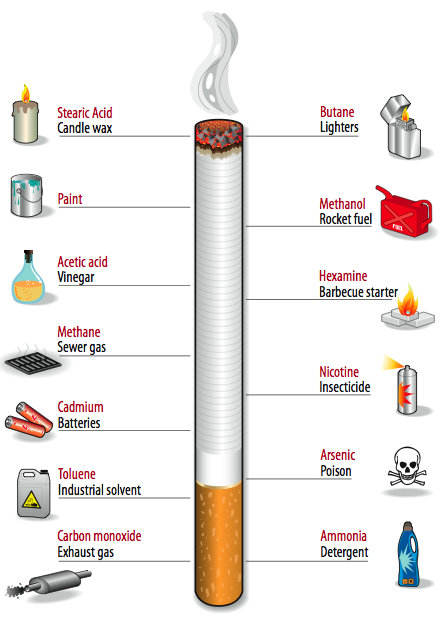
|
BRAIN
Nicotine reaches the brain within seconds and has a direct effect on the body for up to 30 minutes. When a person uses tobacco regularly, the levels of nicotine accumulate in the body during the day and persist overnight, exposing the person to the effects of nicotine for 24 hours.
BODY
In the body, nicotine acts as both a central nervous system stimulant and sedative. The person immediately feels the stimulant effect and pleasurable sensation. It increases alertness, relaxes muscles, improves memory and attention, and decreases irritability. The stimulant effect causes a sudden increase in blood pressure, breathing rate, and heart rate. The central nervous system stimulation is followed by depression and fatigue, causing the person to want another cigarette.
|
|
|
Smoking affects a person's appearance by causing bad breath, yellow teeth and fingernails, and wrinkles. It also affects a person's fitness and stamina level. Tobacco also leads to serious health problems, including:
- Long-term (chronic) cough, shortness of breath, and wheezing.
- Increased risk for heart disease, lung and other cancers, stroke, and emphysema.
- Increased risk for upper respiratory infections like the common cold, the flu, and sinusitis.
|
|
|
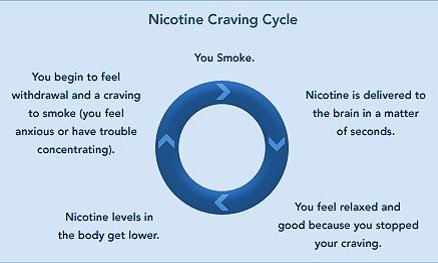
| Nicotine is one of the most addictive substances. Some teenagers show early signs of addiction within days to weeks after starting to smoke. Repeated tobacco use causes a need for increasingly large amounts of nicotine to feel the same effect (tolerance) and withdrawal symptoms if the person tries to quit.
Signs of use:
- Cigarette odour on clothing
- Cigarette or other tobacco product packages or wrappers in wastebaskets
- Sudden need to go outside or to the bathroom after meals
- Decrease in appetite
|
|
|
TEENAGE SMOKERS: REASONS TO QUIT
You may have started smoking to fit in with your friends. Maybe your parents smoke or your brother chews. Whatever the reason you began using tobacco, there are lots more reasons to stop:
Smoking is much more addictive than you may believe. You may think you can stop whenever you choose, but over half of teenagers who start smoking become addicted. Stopping now is much easier.
You will be more in control of your life after you quit.
You will look better. Your hair, clothes, and breath will smell better, and your teeth will be whiter. Teenagers often report that they prefer dating and kissing people who don't use tobacco.
Add up how much money you spend each week, month, or year on cigarettes (or chewing tobacco or snuff). What else could you do with that money?
Using spit tobacco causes bad breath, problems with teeth, and sores or spots inside the mouth.
Smoking is a poor way to lose weight or keep from gaining weight. Physical activity is much better for controlling weight, and it will give you muscle tone. Although many people gain weight after they quit, it's often temporary. Some people even lose weight after quitting because they become more active. After you quit smoking, you will tire less easily after physical activity. Athletes perform better after they quit.
(HealthLinkBC, 2017)
|
|
|
|
|
HOW DO I KEEP MY CHILD FROM STARTING TO SMOKE?
Most people who smoke began before the age of 18, meaning that the best way to prevent your child from becoming a smoker is to teach them not to start from a young age. Youth smoking rates are decreasing in Canada, but many young people still start smoking every year. Here are some steps that parents can take:
|
|
|
1. ENGAGE IN OPEN CONVERSATIONS WITH YOUR CHILD Having age-appropriate and open conversations with your child can help dispel myths they may believe about smoking. By having these conversations at an early age, you create an atmosphere that invites questions and lets your child explore topics relating to smoking.
Explain the health impacts of cigarettes, especially those that impact them in the short-term; effects on ability to play sports, appearance and smell. If you smoke, discuss how it’s affected your life and the challenges you’ve face with quitting. You can explain how hard it is to quit, and that you wish you had never started.
|
2. ENCOURAGE YOUR CHILD'S PARTICIPATION IN PHYSICAL ACTIVITY. Sports and recreational activities keep your child busy and away from situations that may lend themselves to smoking. Sports also teach healthy coping skills, a good point to counter the myth that smoking is a way to cope with stress. Try to explain how smoking can make activities like running and swimming harder due to poor lung health.
3. ELIMINATE ACCESS TO CIGARETTES. According to Health Canada, 72 per cent of Canadian teens have received a cigarette from a family member or friend. Make your home a cigarette-free zone, and encourage any family or friends who smoke to keep their cigarettes and cigarette butts out of sight and out of reach when spending time with your children.
|
4. EDUCATE YOU CHILD ABOUT BUILDING A DEFENSE AGAINST PEER PRESSURE. Peer pressure is a normal part of growing up, but can sometimes influence decisions your child might not feel prepared to address, such as pressure to smoke.
Some strategies that can help your child navigate these situations are to suggest different ways they can say “no,” role play scenarios with them, encourage a wide social network, and build up your child’s sense of self-esteem. Learn more about strategies to help them manage peer pressure.
(HealthyFamiliesBC, 2017)
|
|
|
|
|
|
Vaping is the act of inhaling and exhaling an aerosol produced by a vaping product, such as an electronic cigarette. Vaping doesn’t require burning like cigarette smoking. The device heats a liquid into a vapour, which then turns into aerosol. This vapour is often flavoured and can contain nicotine.
Vaping devices are usually battery-powered. They may come with removable parts. Vaping products have many names, including: mods, vapes, sub-ohms, vape pens, e-hookahs, tank systems, electronic cigarettes,
e-cigarettes, electronic nicotine delivery systems (ENDS). They may also be known by various brand names.
|
| |
|
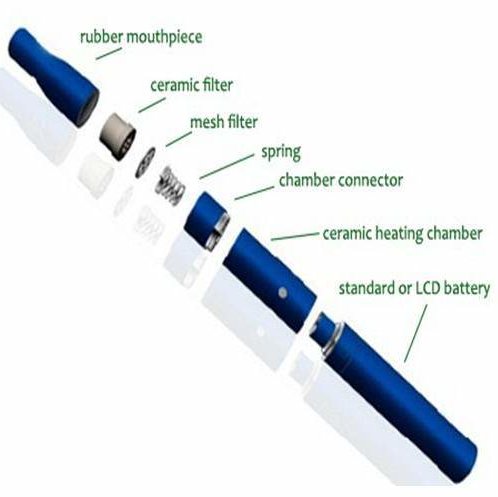
| Most vaping devices consist of a:
- battery
- mouthpiece
- heating element
- chamber, such as a tank or reservoir to contain a liquid solution
Most vaping devices use electrical power from a battery to heat a liquid solution. The heat causes the solution to become vaporized. The vapour then condenses into an aerosol, which is breathed in by the user through the mouthpiece.
Vaping devices are available in many shapes and sizes. Some are small and look like USB drives or pens, while others are much larger.
|
|
|
There are two kinds of vaping devices: open, which means they can be refilled, closed, which means either the whole product, or the part that holds the vaping substances, can’t be refilled.
|
|
|
 | Most vaping substances available for sale:
- are flavoured
- contain nicotine
- are liquids, but some are offered as wax or herbs
In vaping liquids, nicotine and/or flavouring compounds are dissolved in a liquid mixture. This mixture is typically propylene glycol and/or glycerol (vegetable glycerin). Flavouring compounds consist of blends of chemicals used to make different flavours.
In the vaping substances that contain nicotine, the level of nicotine can vary widely. Some mixtures have very low levels of nicotine while others have more nicotine than in a typical tobacco cigarette.
|
|
|
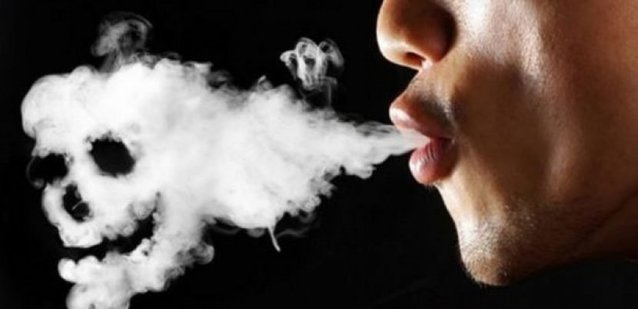 |
Contents of vaping VAPOUR
Vaping products produce an aerosol that may contain dozens of chemicals. The ingredients typically found in vaping liquids are also found in the aerosol. They include:
- glycerol
- flavours
- propylene glycol
- nicotine (possibly)
(Government of Canada, 2018)
|
|
|
|
|
TRUE OR FALSE?
1. The vapour exhaled from a vaping device is just water?
2. E-juice does not contain nicotine.
3. Vapour products are harmless.
4. It is illegal to purchase vapour products for minors.
5. More youth aged 15-19 have tried vaping than smoking tobacco
6. Vapour devices can be used to inhale illicit substances
7.Youth vaping may lead to tobacco use
|
|
|
ANSWERS
1. The vapour exhaled from a vaping device is just water? FALSE products do not produce smoke or steam, but rather an aerosol consisting of fine particles, containing varying amounts of propylene glycol, glycerin, flavourings and other chemicals. Some of these have been linked to cancer, respiratory and heart disease.
2. E-juice does not contain nicotine. FALSE People who use vapour products may be reassured by “nicotine-free” labels on the liquids. Tests performed by Health Canada found that about half of e-juices that were labelled “nicotine free” actually contained nicotine.
3. Vapour products are harmless. FALSE Vapour products are marketed as a harmless alternative to smoking. However, Health Canada states that there are health risks linked to chemicals found in vapour products and long term effects of vaping are still unknown. Even small amounts of e-juice can be poisonous to a young child if ingested and can be toxic if spilled on the skin.
4. It is illegal to purchase vapour products for minors. TRUE Vapour devices and liquids are readily available to buy on the internet or at local retailers. It is AGAINST THE LAW to sell, give or provide any vapour products to someone under the age of 19. If you suspect someone is providing vapour products to minors, please contact Island Health Tobacco And Vapour Prevention and Control at 250-519-3426.
|
|
|
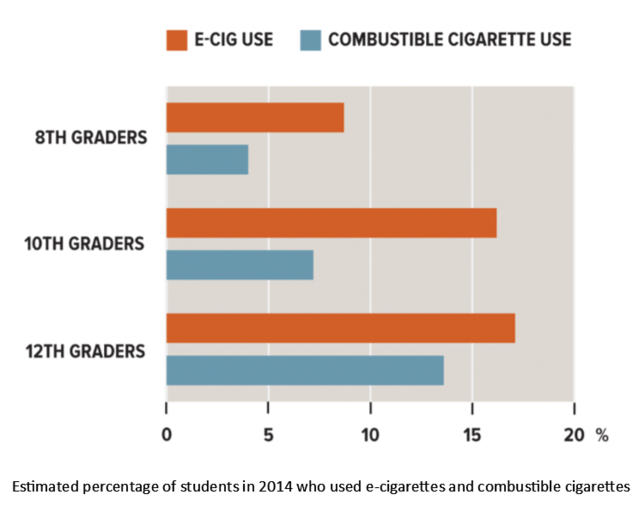
| 5. More youth aged 15-19 have tried vaping than smoking tobacco. TRUE Smoking rates have steadily declined in Canada and BC, but vaping among youth is on the rise. About one in four Canadian youth aged 15 to 19 years report having tried an electronic cigarette.
6. Vapour devices can be used to inhale illicit substances. TRUE Newer generations of vapour devices can be altered for use with cannabis or its components (THC, hash oil) or other substances.
|
|
|
|
7.Youth vaping may lead to tobacco use. TRUE Nicotine is a highly addictive substance. Youth are more vulnerable to addiction because their brains are still developing. There are concerns that adolescent vapour product users may begin smoking tobacco products. A new study by the University of Waterloo found that teenagers who vape have double the risk of smoking tobacco cigarettes.
|
| |
|
|
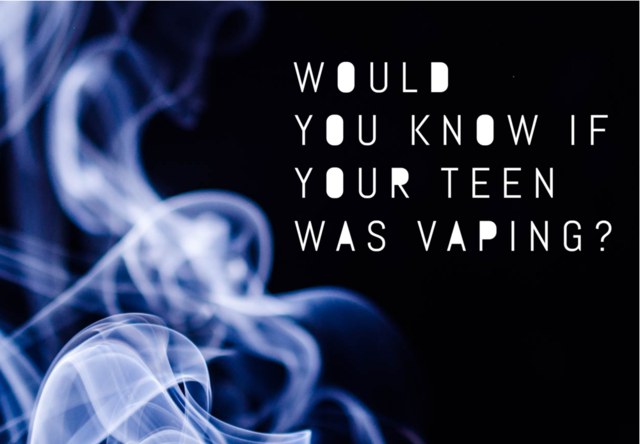
|
WHAT CAN PARENTS DO?
> Start a conversation. Talk with your children and teens about the risks of vaping.
> Educate yourself about vapour products. See the Resources section below.
> Be a positive role model. Don‘t smoke or vape around children.
> Don‘t buy or give vapour or tobacco products to minors.
> Keep vapour products, out of the reach of children and pets. including nicotine refills and empty cartridges, Dispose of batteries in a safe and environmentally sound manner.
|
| |
|
|
|
|
|
|
|
The Greater Victoria School District is committed to providing safe and healthy learning environments for all students. As part of our approach, we have been focusing on mental health and substance use topics to help us promote well-being in our schools.
Substance use is a complex topic that often highlights varied philosophies, myths, and a great deal of fear. The research shows us that early interventions, particularly around critical thinking and decision making, has an impact on delaying use in youth. As well, open dialogue with adults, intentionality around attachment, and a focus on the
| factors that contribute to substance use, as opposed to the actual substances, also prevent, delay and reduce substance use in our students.
Our goal is to create a more cohesive, systematized substance use plan focusing on social emotional learning, that includes our youth and schools, community partners, and families. We strive for a shared vision, common language and consistent messaging over time, in order to support positive youth culture and a healthy perspective on substance use and mental health.
In B.C. the legal age for alcohol and cannabis consumption is 19 years old.
|
|
|
|
|
| |
|
|
|
|
|
|
|
|
| |
|